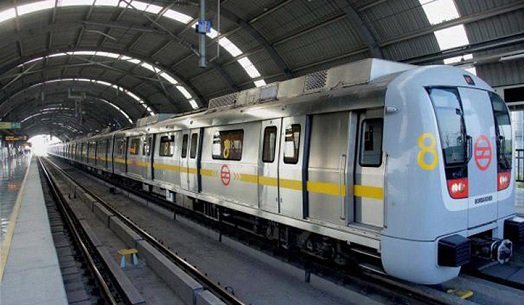The Delhi Metro is indeed the most recent engineering feat to boost the profile of India’s capital city. There has been a fresh revolution in the much-maligned transportation system of the vast city since its arrival.
Earlier taking public transportation to get from one point to another was a major hassle. The overloaded, noisy buses used to run whenever they pleased. The buses frequently broke down and were usually staffed by rude drivers and conductors.
There was no knowing how long the commute would take or if it would be safe.
However, now that the Delhi metro rail is up and running, commuters in Delhi no longer have to worry about their transportation options. They now have access to a quick, convenient, pollution-free, and high-quality mode of transportation into the city.

Below is a list of advantages and disadvantages of Delhi metro
Advantages of Delhi Metro
1. Environment friendly
It’s widely held that Delhi metro systems are better for the planet than other forms of public transportation. The amount of carbon monoxide & additional organic compounds that are volatile released by private automobiles is roughly double that of those released by public transportation. Taking public transportation instead of driving helps cut down on pollution because there are fewer cars on the road.
2. Boosts social integrity
The country’s social cohesion is strengthened by the fact that people of all socioeconomic backgrounds, faiths, and social classes can go anywhere they like. A driving permit is also not required. It’s a godsend for the disabled and elderly who can’t get behind the wheel.
3. Less congestion
One of the main goals of Delhi metro is to reduce traffic congestion by lowering the number of automobiles on the road.
4. Save time
Due to its rapid pace and limited stop locations, Delhi metro significantly cuts down on trip times.
5. Cost efficient
The price is so inexpensive that just about everybody can afford it. Taking the metro is cheaper than driving, maintaining, and amortizing a car.
6. Safety
The elderly & a physical impaired are only two examples of vulnerable groups that would also benefit from the increased safety in transit provided by the Delhi metro. Accessible stations and trains for people with disabilities (PwD) and female-only trains are mandatory features of any proposed metro system. Students are another group that greatly benefits from the metro’s existence.
7. Controlled traffic
In doing so, the Metro Rail reduces gridlock on the highways. There would be a significant increase in traffic congestion without the nearly 50 million daily passenger trips that the Delhi Metro offers. Simultaneously, there is a marked decrease in the number of accidents that occur on the roads.
Disadvantages of Delhi Metro
1. Unfortunate and discomfort
At rush hour, metros can feel like sardine cans. Many people could be stranded if the power to a subway line were to suddenly fail.
2. Fixed routes
All stations are fixed, and the routes cannot be changed. However, the traveler has to board metro on time, else they have to wait for the next one.
3. Costly for the government
The locations where railroad tracks can go are constrained by grading regulations. Underground tunnels are very costly to construct, run, and maintain, even in areas where tunneling is possible due to favorable soil conditions.
4. Demolition
When a Delhi metro was built, it was often necessary to acquire land or demolish buildings, which resulted in the relocation of nearby residents and businesses. This is a contentious topic, which may cause people to oppose the initiative for political or social reasons.
5. Vibration
Vibration from running metro trains is another issue for structures in the vicinity of the lines. This may cause structural damage and other problems that need fixing.
6. Noise pollution
Even when they’re underground or not too far from homes; metro trains can make quite a racket. Those that live or work in close proximity to the tracks may find this an annoyance due to the noise it creates.
7. Limited running time
Most metro rail systems don’t operate 24/7; some don’t even run on national holidays. For those with schedules that necessitate travel outside of typical business hours, this might be an inconvenience.
8. Limited stations
Generally speaking, Delhi metro rail systems serve a limited area of a city and may not get you where you need to go. People who do not live or work in metro-accessible locations may be at a disadvantage because they may have to find alternative means of transportation.
They are useful for getting people about within cities, but they don’t extend to the suburbs or the countryside. This can be an issue for people who need to commute into the city from further afield.
9. Crime
Crime is a concern with metro systems, especially if stations are unattended or poorly lighted. Passengers may worry about their safety if they use this technology.
10. Delays
Maintenance, repairs, and other problems can cause delays or interruptions on the metro train system. Passengers may be inconvenienced and their plans may be altered as a result of this.
11. Less flexibility
Most metro rail networks are permanent installations that operate according to a rigid timetable. This can be inconvenient for those who need to go somewhere not served by the metro, or who have to modify their plans at the last minute.
Conclusion
While Delhi metro offer many benefits, such as convenience and efficiency, they also help a traveler to reach their destination on time, but you must take into account that they are not without their drawbacks, all of which must be weighed before choosing one.
Santosh Kumar is a Professional SEO and Blogger, With the help of this blog he is trying to share top 10 lists, facts, entertainment news from India and all around the world.
